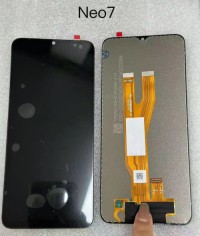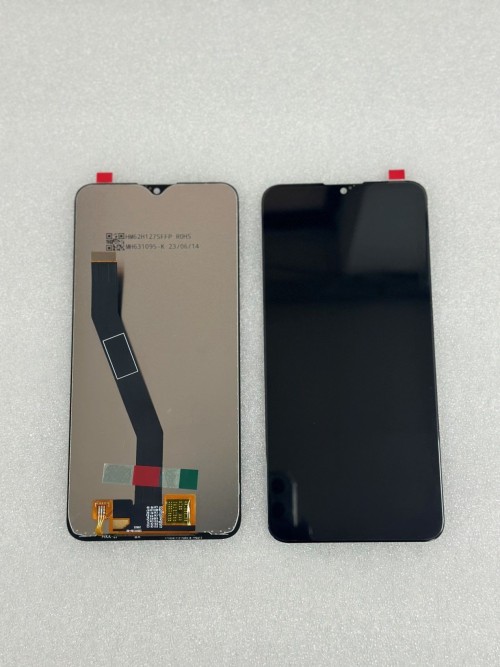It feels so irritating when your mobile screen has some problems. It could be a crack, dark spot, technical error, or no response from the touch functions. All these problems lead to one thing, and that is frustration. No user can deal with these problems unless they can’t afford to buy a new phone or have repair work done. There is a solution if you are having issues with your mobile LCD screen. Not every time you need to buy a new phone or have a screen replaced; sometimes, you can deal with them with simple tricks. Here are some common issues and their possible solutions. Broken, Cracked, or Scratched Screen That is the most common problem people face with their mobile screens. Everyone gets clumsy sometimes, either because they are in a hurry or because they have wet or oily hands. The moment your phone drops on the ground, you feel like your heart has just stopped for a moment. Anyway, that leads to a crack on a screen. If you have a screen protector, that might protect your screen. However, not having a screen protector will lead to cracks, which you need to deal with. Solution Then comes the solution, which is to replace LCD screens. You will have to replace the screen at a nearby mobile repair shop. In this case, you can not use any home remedy or hack to repair the damage. All you will have to do is have it replaced. Dead Pixels Have you ever noticed that a spot or part of your phone does not show color? It feels like a dark mole that needs your attention. It happens because of suppression from keys or any hard object you place on the screen. Sometimes, it is a reaction to a magnetic object that makes contact with the screen. Other reasons are laser exposure or overheating of dead pixels. Solution To deal with it, you can try the pixel repair application. If it doesn’t work, apply pressure with a damp cloth on the spot by turning off the screen. Cover a sharp object like a pen with a soft, thick fabric to apply pressure on that spot. That might work for you. If it doesn’t, you must go for a mobile LCD screen replacement at a nearby shop. Flickering Screen Some people experience flickering screens on their cell phones. That is a sign that the mobile screen has a software or hardware problem. To deal with it, follow the below solution. Solution Reboot the phone to check if it works. Then, you can clear the cache and update applications on the phone. That might work for you. You can reduce the brightness and turn off the blue light filter or nightlight. The last thing to clear the screen flickering is to factory reset. If all of this fails to resolve the problem, the only thing you will have to do is approach a nearby mobile repair expert. Pixel Bleeding Screen Some screens have a problem that seems serious because it hides the affected area. It looks like a dark purple and black mark on the screen, which increases when you use your phone more. This is called pixel bleeding. It happens because of suppression, which is from a hard object like keys or something like that. Some people experience that after dropping their phone multiple times. Solution The only solution is screen replacement. Pixel bleeding is a sign that the screen has permanent damage that will not go away. Screen Burn-in A rare problem occurs mainly on OLED screens. It is like the shadow of the previous page that you just closed still appears in the background of the current screen. You see light shades of icons and images from the last page as if they are burnt marks. That is called screen burn-in. It happens when you have static images on the screen for prolonged durations. That could be a charging cable issue for some users. Solution What you can do to deal with it is reduce the brightness level. Another thing is replacing the wallpaper with darker images or colors. It will prevent the burn-in effects on the screen. Restart the device and adjust the screen time-out settings. If nothing works, you can get it inspected by a technician. Frozen Screen or Unresponsive Touch Some mobile phones have this problem, making the screen feel frozen. Touch features stop working for a few seconds or a minute. Users feel like the mobile phone is lagging, but the problem is the touch function. Solution Here is a simple trick to deal with it. Turn off and restart the screen, not the phone. Just press the power button once and press it again. The screen will start responding again. If it doesn’t work, restart the phone. You can also try clearing the memory, such as cache and unnecessary load. Sometimes, it is about low storage space, which causes the screen to stop processing touch functions. If it frequently happens, it is a software glitch, and you might have to deal with it. It is more about the mobile software issue than the screen problem. Screen Backlight Bleeds Some screens show inconsistent dark displays. It appears like the screen is leaking light from the borders. This is called screen backlight bleeding. It happens when there is a problem with the screen’s installation. There might be detached or loose connections between the screen and the mobile frame. Solution The problem is with the screen, which can be fixed by having it replaced. Visit a nearby technician to have the faulty screen replaced. Vertical Lines on Screen You might have seen vertical or horizontal rainbow lines on the screen, sometimes white or greyish. These lines prevent one from correctly seeing content on the mobile screen. It happens when your phone’s display is suppressed by a hard object. That could also be a reason for dropping your phone on the ground. Another reason could be a loose connection between the screen and the phone. Some people get it from frequent screen overheating or software problems in the phone. Solution The solution is to restart or hard reset the phone. That might resolve the problem. If it doesn’t fix itself after that, you must replace the screen. Screen Lags or Responds Late Some people face problems like screen lagging or late response from the screen. For instance, you press the screen and then get a late response. That shows more of the problem with the phone than the screen. Solution You need to clear the cache to deal with the memory issue. The mobile does not have enough space to run operations, which lags the screen. It might be the software that needs updating. So, create more space and update the applications to keep the screen responsive. Conclusion There are lots of issues with the mobile LCD that need specific solutions. If those Mobile LCD solutions don’t work, the last option is screen replacement. That is not costly, and you will get rid of unnecessary problems on your mobile screen and use it without stress.
 Dongqi Communications
Dongqi Communications


























